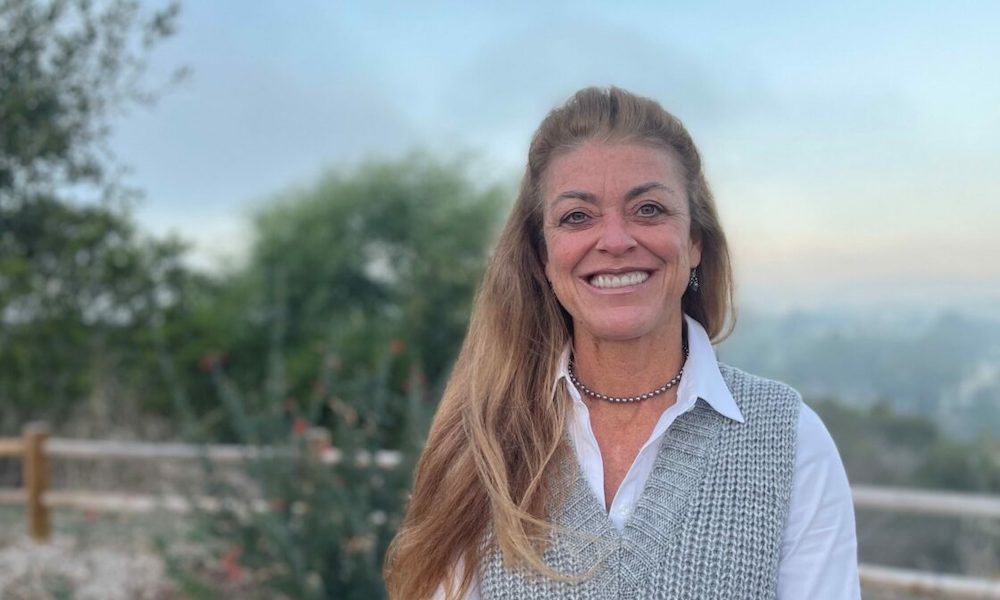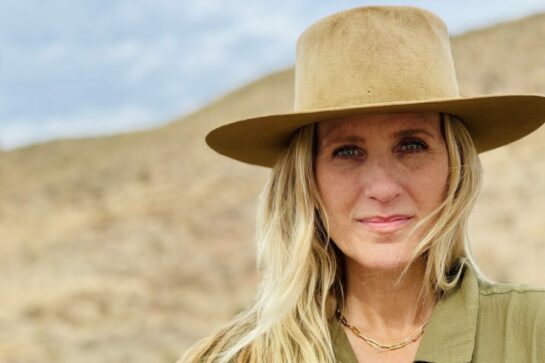Sally Cohenour discovered Voices For Children by chance back in 2011, and instinctively knew the opportunity to train and work as a volunteer Court Appointed Special Advocate (CASA) in the foster care system was what she was looking for. Since then, Sally, 54, a former school principal and current high school counsellor based in San Diego, has advocated on behalf of 15 children. She tells her story here…
What inspired you to become a CASA?
I raised my stepson but he had gotten to the point where he was independent, so I had empty nest syndrome. I felt I’d been blessed with so much and it was time to give back. We didn’t have much growing up but I was always taught as a child to give. I wasn’t sure what to do, though. One day I saw a feature for a fundraiser for Voices for Children (VFC) in my local paper, which peaked my interest. Within one week I saw another article about VFC in a different newspaper. And I thought, ‘Okay God, nudge excepted!’ That was June 2011, the same time I was training for the NY marathon.
What were your initial hopes when joining the program?
I wanted to ease into a spot where I felt like I made a difference. My daily mission is to have a positive impact on the people I’m surrounded by, especially kids, because I work in a high school. I wasn’t quite sure what it was going to be like. I raised my stepson and hadn’t had my own children, and I’m not going to lie, I thought maybe this would scratch that itch. VFC does a really good job of defining what the role is from the start, though. You’re definitely not going to adopt this child. There are guidelines, but I totally understood after it was explained.
What are those guidelines?
For example, we don’t give our phone numbers to our case child, and we don’t take them to our house or introduce them to our families. It quickly became clear that VFC had it organized for the protection of not just the CASA, but for the foster child and all the mutual parties involved. It was really clear cut, very organized, and clearly a well-oiled machine. I sensed it was obviously that way for a reason.
Why is that?
If there’s a conflict of interest, my role is to be a neutral party between all the players involved, including the court and social workers. In addition, the children can get attached to you. VFC has a safe boundary put in place for you that is necessary, and one that I couldn’t have navigated on my own.
What was your first case?
Many CASA’s start with an individual child but my first family was a sibling set of four kids. The youngest child was 2 and the oldest was 12. Their mother was 28 years old. I could barely take care of myself when I was 28, much less have four of my own kids, and her life spoke of that. We ended up having a decent relationship and communicating. She had some addiction issues, and she had a significant other that was not safe for the kids. However, there are also guidelines for that – not to be involved and counsel the mother. My job was to provide safety and fun for the four children and to advocate on their behalf.
How do you deal with that natural instinct to help the mother, especially as an older woman yourself?
It was a challenge but I always felt comfortable, especially because I regularly checked in with my VFC Advocacy Supervisor. The guideline is that you see the children every month at a minimum. I was with the kids every 2-3 weeks, and I sought guidance from my supervisor regularly to navigate the relationship with the mother. My professional background in education also helped me keep that boundary.
What can you tell us about your current child?
My current little VFC boy just turned 9. He was living on the street with his mom and had been bitten so many times by mosquitos that his legs and ankles became badly infected and he was rushed to the ER. That’s where CPS became involved. I went to meet him for the first time and he was for me waiting at the door. He’s staying with a really solid foster family. It’s just him, the mom and dad and 2 dogs, which he loves. He’s one of the family and he’s already calling them Mom and Dad. That happens a lot because they want that in their life. He was there since July 2021, and I met him that October.
Not long after, I went to visit him for his birthday. He’d gotten up early that morning and showered, which his foster parents say is hard because he’s a boy’s boy and loves to be rough and tumble! He’d actually asked for hair product, he’d brushed his hair, and he’d put on his foster dad’s cologne for his ‘date with Sally’! That’s when I know I’m doing the right thing. At the end, it was time to go to his birthday party and he comes up and gives me this big surprise hug. And the message is clear to me. All of us can do this. Maybe not at this moment but at some point in our life.
What do you get to do on case child visits?
The amount of resources available through VFC is amazing: tickets to museums in Balboa Park, the Midway navy ship, Legoland, etc. I sign my case kids up for everything and anything! All of the holiday parties, arts and crafts events, museum visits, and local activities.
I once helped teach a 9-year-old girl to ride a bike that was donated to VFC. That was one of the most exhilarating feelings. Running through the park while she was riding on the grass, giggling uncontrollably, shouting, ‘look at me!’ – on a bike for the first time. Her family would never have been able to give her a bike. CASAs will frequently get an email to say a donor just dropped off 100 back packs, stuffed animals, or school supplies. It’s first come, first served, and I take advantage of everything!
How do you get a case child to open up?
Actions are everything. As a CASA, the most important thing is showing up and listening, and letting them know that you’re their person. Ask questions and be willing to share your life experiences. Some kids struggle to get past the labels that have been put on them. I had a case with an older boy who came from a rough situation. He was placed in the local emergency shelter and he had this baggage that he was a tough kid. But I would encourage future CASAs that although you read these kids’ reports when you first get assigned to them, don’t judge the child by what’s in the report. This boy was a teddy bear!
Have you found it easy to bond with your case children, who may be distrustful due to neglect or abandonment?
Connecting with kids is my gift. I probably connect with kids better than with adults! I just enjoy it and attempt to meet the child where they are at by listening. I ask and notice what the child likes to do for fun and set up outings or activities based on that. Ultimately, the key is to keep showing up and to do things when you say you’re going to do them. That consistency is so important for building trust, especially when they’ve had so many people coming in and out of their lives.
Being a teacher must be so helpful in becoming a CASA but what do you say to women who don’t have much experience with kids or who worry, ‘What if I can’t do it’?
You get so many suggestions during the training about connecting with the children, including how to let them know, ‘I’m your advocate. I’m going to be your steady, your constant’. I’ve had kids who have had 4 or 5 social workers throughout my time with them. I’ve seen them go through lawyers and I’ve seen their parents come and go. And I say to them, ‘I’m just going to be here. You can rely on me being here. I can help with your school because I will be connecting with your teachers’. The most important thing is just showing up – every time. It’s critical.
How long are you involved with a child’s case?
It varies. As little as a year, or in one case, one teenager was 16 when I was assigned to his case and I was on his case till he was 19. After I was officially off his case we chose to keep in touch and I helped him with his resume and we completed his job applications together. He only had his dad left because his mom isn’t around. I asked VFC if I could keep in touch because he had no one. As long as you maintain those professional boundaries and you are comfortable, it’s absolutely fine.
So you’re allowed to keep in touch after the child’s case is closed?
Yes, but you want to respect the players and stakeholders in the child’s life, specifically the family. I just think: if I was in that situation, how would I want to be treated? So it’s largely dependent on that.
What’s made you continue being a CASA every time a child’s case has finished?
You develop a close relationship with your supervisor and they walk you through the happy ending of a case situation and it’s kind of natural to think, ‘What’s next?’ I’m a person of faith so I pray about it and have faith that that’s my role. Often, I think, ‘how am I going to squeeze out the time?’ But if I make the time to do something for someone else then I’m always provided with more than enough time to accomplish what I need to.
When I began training, there were around 5000 children in foster care in San Diego alone. And I can’t carve out 4 to 6 hours a month? How much time do I spend on social media?! If we all just put in a few hours every month, we can lower that number.
How many hours do you spend per month being a CASA?
The expectation and average is 10-15 hours per month, including preparing the court reports, calling and connecting with social workers, foster parents, and lawyers. It can vary by the child or sibling set. You communicate with your supervisor monthly and they encourage visits with the child every 3-4 weeks. I got into a routine of every 2-3 weeks.
What kind of ongoing support do you get from your CASA supervisor?
Supervisors are always there to guide you through everything: lice, homelessness, relationships with foster parents. You have an open-door policy to communicate and you get a very quick response.
Can you communicate with other CASAs?
Yes! VFC hosts small groups for CASAs to talk about what’s going on with our case children and share experiences. You’re never alone.
What are the harder parts of being a CASA?
One teenage boy would ask me about my family. He longed so much to have a family. He actually asked me once, ‘Can you take me home this Christmas?’. It broke my heart and I had to say no. That was definitely one of the harder situations. I told him I would love to but there are specific guidelines and boundaries for a reason, and I know you will respect them so I can continue to be your CASA.
Tell us about writing the child’s court report.
Before each court hearing, which is typically every six months, CASAs write a report about what is going on in the child’s life. The goal is to help the judge understand how the child is doing and if they have any needs that should be addressed. That’s the hardest part for me personally because I work 45-60 hours per week. But VFC give you the templates and they ask easy numbered questions, so it’s very easy to fill in. The supervisors help you elaborate on parts together by asking questions. They know you’re busy and they want to help you fill it in.
How instrumental are CASAs in what happens to the child moving forward due to communication with all parties and writing the court reports?
The judge speaks directly off the CASA’s report in court. They know the CASA is the direct connect – the one that spends time with the child and sees the parents in action, sees the foster family, the school, the medical reports – we see everything. So it’s kind of empowering.
How has being a CASA impacted your life?
I feel really good about my contribution. I’ll never forget that statistic in my training – 5,000 foster kids. It changed my life when I read that. I thought, ‘We can make more babies, we can adopt children, but here are some kids that have a serious need’. We donate to foreign countries but we have a need right here in our county. I always want to be in the mix because I know I can help. I have the time and that’s my role right now. That’s my part. And my family understands.
What is your view of the foster system now, after 10 years?
I have nothing but the utmost admiration for social workers. And I love that there are so many resources donated for the kids. People need to donate to our counties, to our kids, and to the foster care system. We have a need right here. People may not see it but I wish it was on billboards everywhere.
VFC supervisors are angels! They prepare and support you working with the social workers, and they know best how to communicate with everyone and navigate the system. I’ve only had one case where I felt like the social worker had his own agenda but I just had to respect where he was. It didn’t mean I agreed. And it’s very rare. Usually you’re all on the same page, pulling for this kid and good things happen.
What do you say to women who are interested in becoming a CASA but are nervous?
I was there. I was fearful that I would get too emotionally close and break all the rules. But it quickly becomes so clear why there are guidelines. You’re never alone. You have a personalized coach in your supervisor who will literally walk you through every single situation. There’s a script when you first meet the child: who to call first, second, third. And the process is always fine-tuned through things like Covid.
What’s your favorite part of being a CASA?
The direct time spent with the kids. Realizing that I have a positive impact and seeing it in action, by giving the child the unconditional knowledge that I’m there to support them and be their safety net. Also, seeing the resources for the child come together and the team of individuals be on the same page to support the child, whether it’s to reunify or to find a forever home.
Do you intend to be a CASA for years to come?
Yes. I don’t know when I won’t do it! I retire from the education system in 6 or7 years and what a great thing because even more time will open up! I will never be able to give back the gifts I have been given by these children – their respect, kindness, and love. When your case child looks at you and says thank you in words or you can just see it in their eyes, that’s priceless.
Voices For Children provide the volunteer CASA program for foster children in both Riverside and San Diego counties, California. For more information, visit https://www.speakupnow.org/
The above story is Sally’s experience as a CASA for Voices For Children in San Diego, but the National CASA Association provides oversight and resources to CASA programs across the USA. Visit https://nationalcasagal.org/ for more details.





Janine Thomas
04.11.2022 at 2:32 pmThis story really warmed my heart. As a former Deputy Sheriff, I know that volunteers such as Sally may be the single bright spot of a child’s youth. What a wonderful suggestion on how we can give back during midlife. Thank you for sharing your heart, time, and experience!
ttm50-maddy
04.11.2022 at 5:31 pmThank you, Janine. I hope Sally’s CASA experience is as inspiring to other women as it is to me!